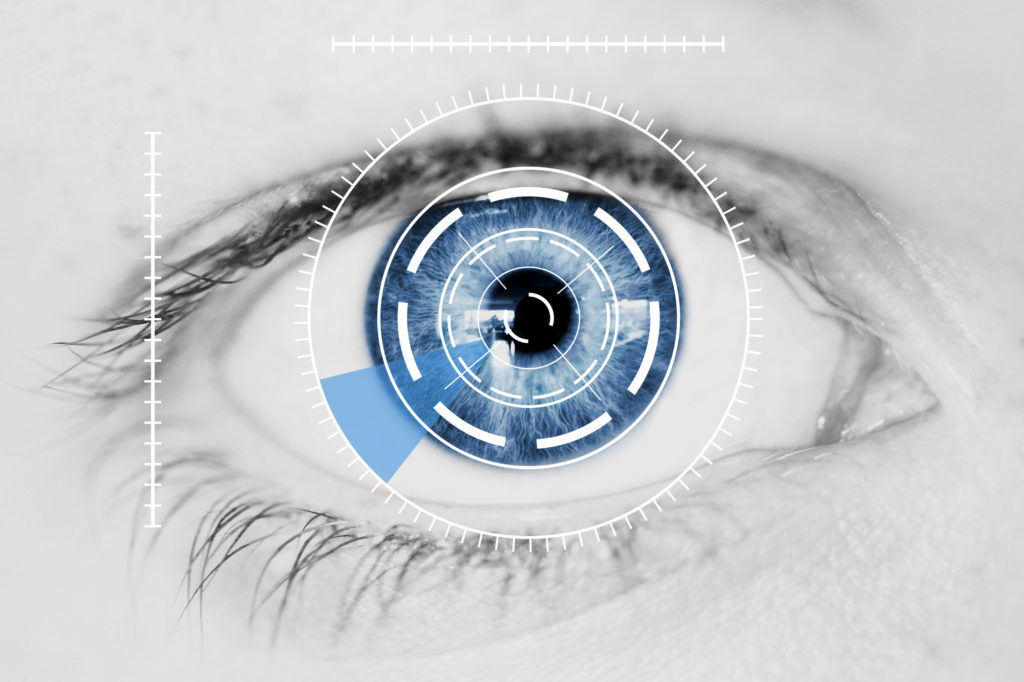
10 Critical Warning Signs of Retinal Damage
Have you been dealing with vision problems recently that are worse than normal? If you see any of these symptoms, chances are you have retinal damage and should seek us out for assistance.
Retinal damage is not an uncommon problem. Its leading cause – macular degeneration – affects between 10 and 11 million people in the USA.
As damage to the retina worsens, sight is impaired and quality of life declines.
Retinal damage can be the result of many underlying problems. You need to be on the watch for the symptoms of retinal detachment, retinal displacement, and other retina conditions.
Be aware that while eyesight does generally worsen with age, there are vital steps you should take to protect your precious eyesight. But damage to the retina can occur in some eyes, no matter how much care we take.
Here are the 10 critical warning signs of retinal damage which mean it’s time to consult an ophthalmologist.
1. Dim Vision
‘Dim’ is the word we use to describe vision which is literally less bright than it used to be.
It’s characterized by a lack of contrast between colors and a “darkening” of the vision. This is because the eye is taking in less light, due to damaged retinal cells.
It’s often confused with blurred vision, which is a different symptom in and of itself. However, the two may be experienced together, which makes it harder for patients to describe their symptoms.
But to do our best to describe the symptom, it might be compared to turning down an electrical light using a dimmer switch.
This is because the retina is the part of the eye which contains structures sensitive to light. These generate impulses along the optic nerve to the brain. This is why it’s such an important part of the eye, and why you must always ask for professional help if you suspect retinal damage.
2. Distorted Vision
Look at something you know is straight, such as the edge of a rectangular table or a lamp post. If it appears ‘wavy’ to you, your vision has become distorted.
This may be due to retinal damage. There’s a part of the eye called the epiretinal membrane, which lies right on top of the retina. If it pulls up on the retina too much, it can distort your vision, and eventually cause damage.
However, distorted vision may also be due to capillaries at the back of the eye bursting and leaking fluid into the retina.
This might be due to capillaries which aren’t quite ordinary, or diabetic retinopathy. This is a condition which may develop over time if diabetes sufferers are unable to keep their blood sugar levels stable.
Whatever the cause, distorted vision should be followed up on immediately by a trip to the eye doctor. Don’t drive yourself if your vision has been affected in this way – ask a family member or call a taxi.
Double Vision
Double vision is a subset symptom of distorted vision.
This is where you see two versions of the same sight, slightly layered or overlapping. It can be very disorienting as well as uncomfortable to view.
Retinal damage can be the underlying cause of this issue.
Cataracts can also cause double vision, but this will usually only occur in one eye.
3.Floating Webs
We all sometimes see the “floating” lines in our eyes from time to time. Squiggly lines are common, as are small rings. Mostly, these are harmless and our brains tune out and stop noticing them again after a few minutes.
They’re produced by a condition called posterior vitreous detachment, which by and large is not a major problem.
But if these are worsening or becoming more common – and if they’re building into a ‘web’ and obstructing your vision – they may be a sign of something more serious, especially if they appear alongside other symptoms like flashing lights (see below).
4.Flashing Lights
Flashing lights are often associated with migraines.
If you’re not a migraine sufferer and the lights aren’t followed up by a headache, they are likely to be something else. They may relate to retinal damage.
The retina is light-sensitive, and when it’s damaged, it may send abnormal signals up the optic nerve to the brain. This can be expressed in your vision as flashes of lights.
These might light up the floating “webs,” or just appear as random flashes. This can be quite distracting and will interfere with your day-to-day life.
5.Halos Appear Around Light Sources
People with retinal damage issues sometimes see “halos” surrounding light bulbs and other light sources.
This is because the retina isn’t able to create such a clear and crisp picture as it used to, thanks to retinal damage.
Light may be refracting through the structures in your damaged retina oddly. So as well as white halos, you might also see rainbow halos.
Whichever you’re seeing, you’ll find it harder to focus your vision. They interfere with your depth of field, which can make it difficult to see things further away.
6.Grey “Curtain” Blocking Your Vision
It may seem like someos pulled a dark curtain across part of your vision, blocking out all or most light. Other patients liken it to a shadow being cast across their eye.
This may relate to very serious retinal detachment, and needs to be looked at immediately. Fast action could save your vision in that eye – left unchecked, the damage could be permanent.
Retinal detachment is where the retina pulls loose from the back of the eye. It can become detached from the blood vessels at the back of the eye.
Without a blood supply, cells in the retina no longer receive the oxygen they need to survive. They then get damaged or die off very quickly, resulting in this curtain, or shadow, effect on the vision.
A grey curtain might also be the result of blockage of these same blood vessels. If the retinal artery becomes obstructed, the blood supply to the retina can become completely blocked, leading to total blindness in that eye.
If it’s a vein rather than an artery or other vessels leading towards the retina, the situation is a little different. Sight loss will still occur, but more slowly.
7.Peripheral Shadows
Aside from the more dramatrtain effect described above, some patients describe “shadows” edging in from the corner of their eye or eyes.
This may also be the result of retinal detachment, but a less serious detachment. Or, as above, it may be the veins rather than the arteries behind your eyes which are blocked. This will lead to slow damage rather than rapid cell destruction.
The cells may still be damaged, but the damage could be more patchy and therefore less severe. However, the shadows may also get worse over time.
So it’s really important that you receive treatment as soon as possible if this symptom develops. It can help to prevent a more serious detachment from occurring, which could save your vision entirely.
8.You Develop a Blind Spot
Developing a blind spot is notal. This occurs when the photoreceptors (light-sensitive cells) in the retina become damaged in a specific region of the eye.
For example, this could be caused by physical trauma which impacted one eye in a specific place.
There will be no image recognition in the area whatsoever. You should consult with an eye doctor as the damage may be reversible if you’re lucky. But even if it isn’t, an ophthalmology professional will help to ensure the damage doesn’t spread.
They’ll also offer advice on any course of action you can take to prevent further damage occurring in future.
9.Will I Feel Pain?
Pain isn’t (always) a symptom of rl damage. And that’s really important.
We’ve listed this question here as it’s something which is often misunderstood about retinal detachment and damage. There is unlikely to be any pain from the condition unless it was caused by a physical injury. Or if you have a painful infection of the eye which is contributing to the damage.
It’s important that you understand this. If your vision blurs, you see flashing lights or experience other problems, everything is not necessarily fine just because you aren’t in pain.
Don’t risk it. Go and see an eye doctor as soon as you can.
10.Overall Decrease in Quality of Vision</h3
This is the hardest to define, but alst obvious symptom you might experience if you have retinal damage.
If the quality of your vision suddenly gets worse, you’ll notice and understand what we mean.
If you lose any of your sight in any way, or it gets worse for any reason, go and see a doctor. Symptoms 5-7 detail some of the most common ways vision loss manifests itself, but these aren’t the only causes.
It might not be retinal damage, but it could be due to other serious eye conditions such as cataracts. Or inflammation of other parts of the eye, such as the corneas.
These also need to be treated, so that your quality of life isn’t affected.
Who is Most at Risk?
While everyone should be on the lookout fose tell-tale signs of retinal damage, certain groups of people are more likely to experience the condition than others.
If you have a family history of retinal detachment, for example, you’re more likely to experience it yourself.
Those who have had previous eye injuries, diseases, or cataract surgery are also more at risk. As are people who are extremely nearsighted.
If you fall into any of these groups, keep an even closer guard on your eyesight. Visit an eye specialist the moment you notice any of the above symptoms developing.
Other Causes of Retinal Damage
Besides genetic causes, physical injury, and diseases which cause retinal damage, there are a few other things which can cause the condition.
Some of these may surprise you, as they don’t seem to immediately relate to the eye. However, they can all be the source of damage to the retina:
- Chronic stress
- Steroidal medication
- Drug misuse
- Heart disease
- Other circulatory issues
Diabetes
can cause diabetic retinopathy
Again, if you have a history of any of the following and notice odd symptoms to do with your eyes, you should consult with a professional eye doctor.
Treatment for Retinal Damage
The first step to treating any retinal damage is understanding what the precise nature of the damage is.
We use a device called the Optos to create a picture of the back of the eye. From this, we can discern the problem, or problems, which have led to retinal damage.
Once we have a better understanding of what’s causing your symptoms, we can start putting together a course of treatment.
Retinal surgery is often required in cases of retinal detachment, as it’s necessary to physically intervene in these cases. Laser surgery and cryotherapy are common methods to re-attach the retina back to the right place inside the eye.
For diabetics experiencing diabetic retinopathy, injections may be necessary, as well as surgery to remove blood from the eye. Careful management of your condition will be arranged in conjunction with your physician, to help reduce the chances of the condition becoming worse.
How Timely Eye Care Can Help
Your sight is vital. Never put off a visit to your eye doctor.
The earlier you come, the earlier we can help, and the better the chance you’ll retain more of your vision.
At Magruder Eye Institute, we have many specialists who have devoted their lives to better understanding vision and retinal damage and working hard to save the vision of their patients.
Find your nearest Magruder Eye Institute location and book an appointment as soon as you are able.









